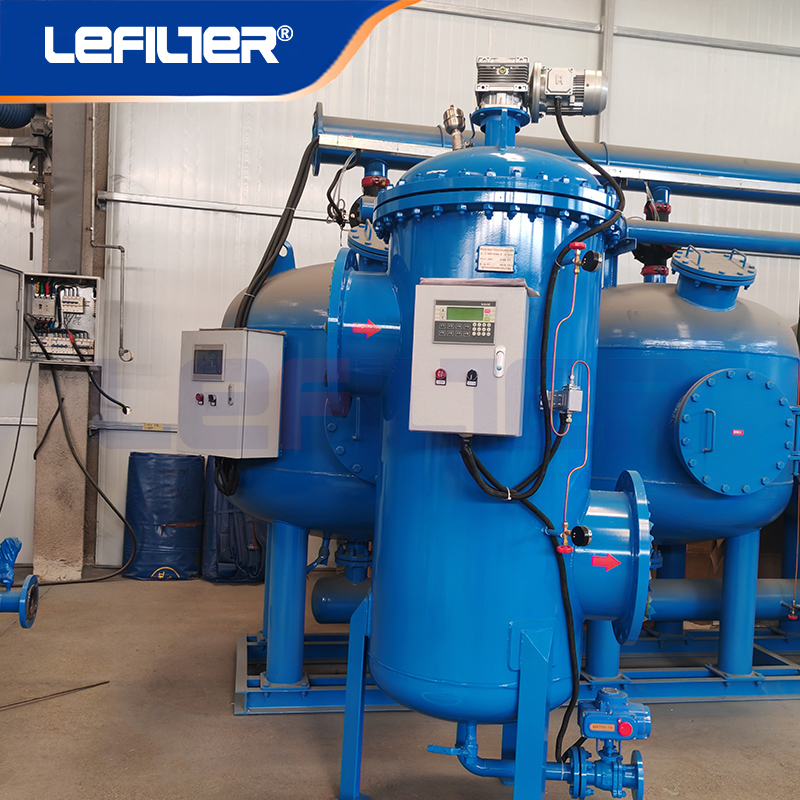Agricultural Irrigation Revolution: How Self-Cleaning Filters Solve Clogging in Drip Irrigation Systems
DATE:2025-03-31 Number of views: 1 Source:jiaxiangting
In regions where water scarcity meets agricultural demand, drip irrigation has become a lifeline for farmers. However, this efficient watering method faces a persistent enemy: particulate clogging. Enter the automatic self-cleaning filter – a technological breakthrough transforming irrigation efficiency across developing nations.
The Global Clogging Crisis in Drip Irrigation
Drip irrigation systems lose up to 40% efficiency due to particulate accumulation in emitters, according to FAO studies. In developing countries where farmers rely on canal or pond water sources, the problem intensifies with:
• Sand and silt from open water channels
• Organic debris in untreated surface water
• Algae and biofilm growth in warm climates
Traditional screen filters require daily cleaning – an impractical solution for smallholder farms. This is where automatic self-cleaning filter systems demonstrate their value, maintaining uninterrupted flow while handling high particulate loads.
How Automatic Self-Cleaning Filters Work in Irrigation
The modern self-clean strainer operates through an intelligent three-phase process specifically designed for agricultural applications:
1. Continuous Filtration Phase
Water passes through stainless steel wedge-wire screens (50-200 micron), trapping particulates while maintaining optimal pressure for emitters.
2. Smart Cleaning Activation
When differential pressure reaches 3-5 PSI (or at timed intervals), the full automatic self-cleaning filter initiates cleaning without flow interruption – critical for crop hydration consistency.
3. Efficient Backflush Mechanism
A hydraulic piston or rotating spray arm discharges trapped particles with just 1-2% water loss, making it ideal for water-scarce regions.

Key advantages over conventional filters:
✔ Zero manual cleaning – Saves 15 labor hours/acre annually
✔ Adaptive cleaning cycles – Adjusts to real-time water quality
✔ Low-pressure operation – Compatible with gravity-fed systems
Technical Innovations Driving Adoption
Today's agricultural-grade automatic self-cleaning filter systems incorporate groundbreaking features:
1. Sand-Tolerant Design
Heavy-duty self-clean strainer models feature abrasion-resistant screens that handle 5000+ NTU water – common in river-sourced irrigation.
2. Solar-Powered Options
Off-grid full automatic self-cleaning filter units integrate photovoltaic panels, eliminating electricity dependence.
3. Anti-Biofouling Technology
Special coatings on filter elements prevent algae adhesion – a major cause of emitter clogging in tropical climates.
4. Smart Monitoring
Advanced models feature GSM-enabled sensors that alert farmers to:
• Filter status via SMS
• Particulate load trends
• Maintenance requirements

Impact on Developing World Agriculture
The automatic self-cleaning filter revolution delivers measurable benefits where they matter most:
For Smallholder Farmers
• 30% higher crop yields from consistent irrigation
• 60% reduction in system maintenance time
• 5-year ROI through water and labor savings
For Commercial Farms
• 90% decrease in emitter replacement costs
• 45% less water consumption
• Compliance with precision agriculture standards
Government Irrigation Projects
• 70% longer infrastructure lifespan
• 50% lower maintenance budgets
• Improved water equity in shared systems
Implementation Considerations
When selecting a self-clean strainer for agricultural use, evaluate:
1. Water Source Characteristics
• Particulate concentration (NTU/TSS)
• Organic content levels
• Flow rate requirements
2. System Compatibility
• Pressure range (1-8 bar typical)
• Connection sizes (1"-12" common)
• Power availability (AC/solar/hydraulic)
3. Operational Factors
• Farm size and plot dispersion
• Labor skill levels
• Local service support
Leading full automatic self-cleaning filter manufacturers now offer:
✓ On-site water testing
✓ Mobile maintenance training
✓ Localized spare parts networks

Future Trends: The Next Generation
Emerging innovations in automatic self-cleaning filter technology include:
1. AI-Optimized Cleaning
Machine learning algorithms that predict optimal backflush timing based on:
• Historical water quality data
• Weather pattern impacts
• Crop growth stages
2. Nano-Filtration Integration
Hybrid systems combining self-clean strainer technology with ceramic membranes for pathogen removal – addressing irrigation-waterborne diseases.
3. Blockchain Water Accounting
Full automatic self-cleaning filter units with tamper-proof water usage recording, enabling:
• Smart water credit systems
• Irrigation efficiency certification
• Carbon footprint tracking
Conclusion
The automatic self-cleaning filter represents more than just equipment – it's a paradigm shift in agricultural water management. By solving the drip irrigation clogging dilemma, these systems empower farmers in developing countries to achieve reliable harvests with less water and labor. As self-clean strainer technology continues evolving with smart features and renewable energy integration, its role in global food security will only expand. For irrigation projects seeking sustainable solutions, adopting full automatic self-cleaning filter systems isn't just advisable – it's becoming essential for 21st century agriculture.


